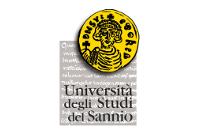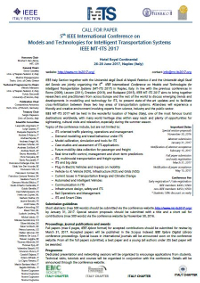SPECIAL SESSION
Francesco Viti, Guido Cantelmo
Models and Technologies for Demand Estimation
Intelligent Transport Systems (ITS) have shown their capability of exploiting real-time and/or predicted data to enhance traffic safety, reduce the negative environmental impacts of transport systems, and increase the efficiency of transportation networks. However, performances of dynamic transportation models in reproducing network dynamics are strongly related to the quality and quantity of the available mobility demand information. As a consequence, the knowledge of the Origin-Destination (OD) demand flows has an important role to play in ensuring the successful deployment of ITS.
In a dynamic context, for simple cases such as urban intersections or motorways equipped with entrance/exit toll stations, it is possible to directly estimate/count OD flows. For more general applications, if one were to rely solely on standard methods, only samples of the OD flows can be observed. A quite classical approach is to conduct an expensive travel survey to derive time-dependent OD flows. A more recent option is to exploit new data collection methods, such as Automated Vehicle Identification (AVI), GPS, Bluetooth and GSM data. After this sample has been collected, a common and widely adopted procedure to infer the real OD flows is to estimate them through surveillance data that, contrarily to the OD data, are easily available and cheaper. This problem is commonly known as the OD Estimation problem. When this procedure is applied to public transport, additional difficulties arise from the fact that the most straightforward source of information is the ticketing system, which is inhomogeneous across different transit networks. The problem becomes even more complex when multimodal matrices are jointly estimated, since the level of information may be different for different modes of transports.
Despite the last decades have witnessed an intensive research activity in this direction, a reliable estimation of the OD flows is achievable only if an enormous amount of information is available. As a consequence, only a few frameworks have been successfully implemented on real-world instances.
This proposed special session focuses on the new opportunities in the area of ITS and new technologies for developing and calibrating demand models for both private, Public Transport as well as multimodal systems. Vehicle to Vehicle communication, Crowd sensing, Smart Mobility, Shared Mobility, digitalization and Electronic ticketing are only a few examples of new trends that are shaping the mobility of the future. By leveraging on a more reliable, complete and large set of data, researchers can nowadays tackle many of the critical and systematic issues behind OD estimation, develop new models based on a better understanding of complex mobility behavior, forecast unusual patterns and introduce benchmarking practices to validate their approaches.
Topics of interest include, but are not limited to, the following:
1. ITS and/or Big Data within the OD estimation problem;
2. Improving the efficiency of the existing OD estimation models;
3. Improving estimation reliability;
4. Estimating unusual demand patterns;
5. Demand estimation of multimodal systems;
6. Applications on real life networks.




